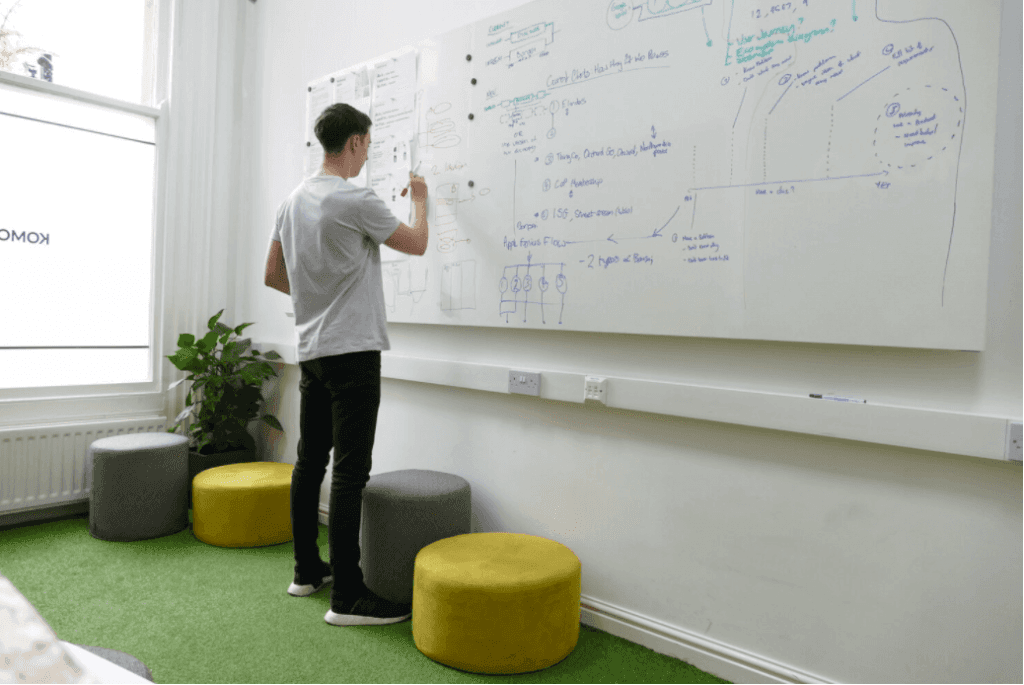The Benefits of Prototyping in Design
UI/UX Design

What is Prototyping in Design?
The benefits of prototyping for design projects has grown substantially in the last few years, and it continues to do so. Prototyping designs has grown to become an integral part of UX workflows. Without a doubt, this is due to the knowledge that can be gained from user testing sessions and observing users with interactive designs.
Good user experience takes time to design through constant iterations. Prototypes can appear at every step in the design process to test ideas. The main aim is to enable designers, customers and users to test and discover the functionality and usability of the product. The flexibility of prototypes is the main selling point, the ability to test early and often is a huge bonus, allowing designers to discover any issues as early as possible!
Prototyping for People
Prototype designs should focus on people: the core drivers and frustrations of a user.
To leverage the full advantages of prototyping in design, you can begin with low-fidelity (low-fi) paper prototypes and progressively become more advanced as the project moves forward. Over time, it will ensure that you have a user-focused product that is well-tested. Eventually, you will end up with a high-fidelity (hi-fi) prototype which will resemble a finished product or Minimum Viable Product (MVP), with detailed content and polished design for the final stages of user testing.
This constant iteration relies on the speed of online prototyping tools – most of which are now user-friendly and have drag and drop libraries with native elements allowing mobile prototypes to be delivered quickly and ready for testing. Further integration through plugins for design applications such as Sketch and Figma permit assets to be easily saved and implemented into an interactive prototype.

It is difficult to explain and perform user testing sessions with static assets such as wireframes or mock-ups. Ultimately, the user needs to get a taste of how the product will function and give full access to a prototype. Interactive prototyping tools are a powerful weapon in a designer’s arsenal. They give the user a greater understanding of the system architecture and various paths they can take to unearth any issues at the same time. At KOMODO, we use InVision to collaborate with our clients and users to test interactive prototypes.
Furthermore, realistic interactions can be implemented into digital prototypes, giving the user an even better idea of how the final product will feel. Although this is not a necessity with prototyping by any means, it is an extra function that can be implemented in late-stage prototypes.
Adding to the user experience in this way gives an improved representation of the final product. Furthermore, you can enhance the benefits and quality of testing if you allow your user to interact with the product on its intended medium e.g mobile.
Hype the Prototype!
The benefits of prototyping go further than just the UX of a product, an example from the book “Prototyping: A Practitioner’s Guide” by Todd Zaki Warfel states that a change in process to a more prototyping-oriented process resulted in the following benefits:
The time and effort required to produce the prototype and 16-page supplemental document are less than half required for the 200-page specification document.
Estimates for build time and cost have become 50% more accurate.
Request for clarification by the development team has been reduced by 80%
The amount of rework and bug fixes post-launch has been reduced to 25% of similar previous projects.
On top of being an incredibly effective approach on its own, prototyping naturally belongs in the Design Thinking Methodology. The popularity of design thinking has garnered over the past decade rests in the fact that it is an approach to design that challenges assumptions and is unquestionably user-centric.
Digital prototyping has become hugely popular and shows no signs of slowing down, particularly because design applications have simplified prototyping in the design process by integrating specialised tools within their applications.
We’re UX to Our Core.
We’re KOMODO, a digital product studio specialising in research, digital design and software delivery. We pair industry best practices with our 19 years of experience in the design business to deliver exceptional applications for web and mobile. We have a deep understanding of the user experience and go above and beyond to create mutually beneficial partnerships with our clients that last.

Got an idea? Let us know.
Discover how Komodo Digital can turn your concept into reality. Contact us today to explore the possibilities and unleash the potential of your idea.

Sign up to our newsletter
Be the first to hear about our events, industry insights and what’s going on at Komodo. We promise we’ll respect your inbox and only send you stuff we’d actually read ourselves.






